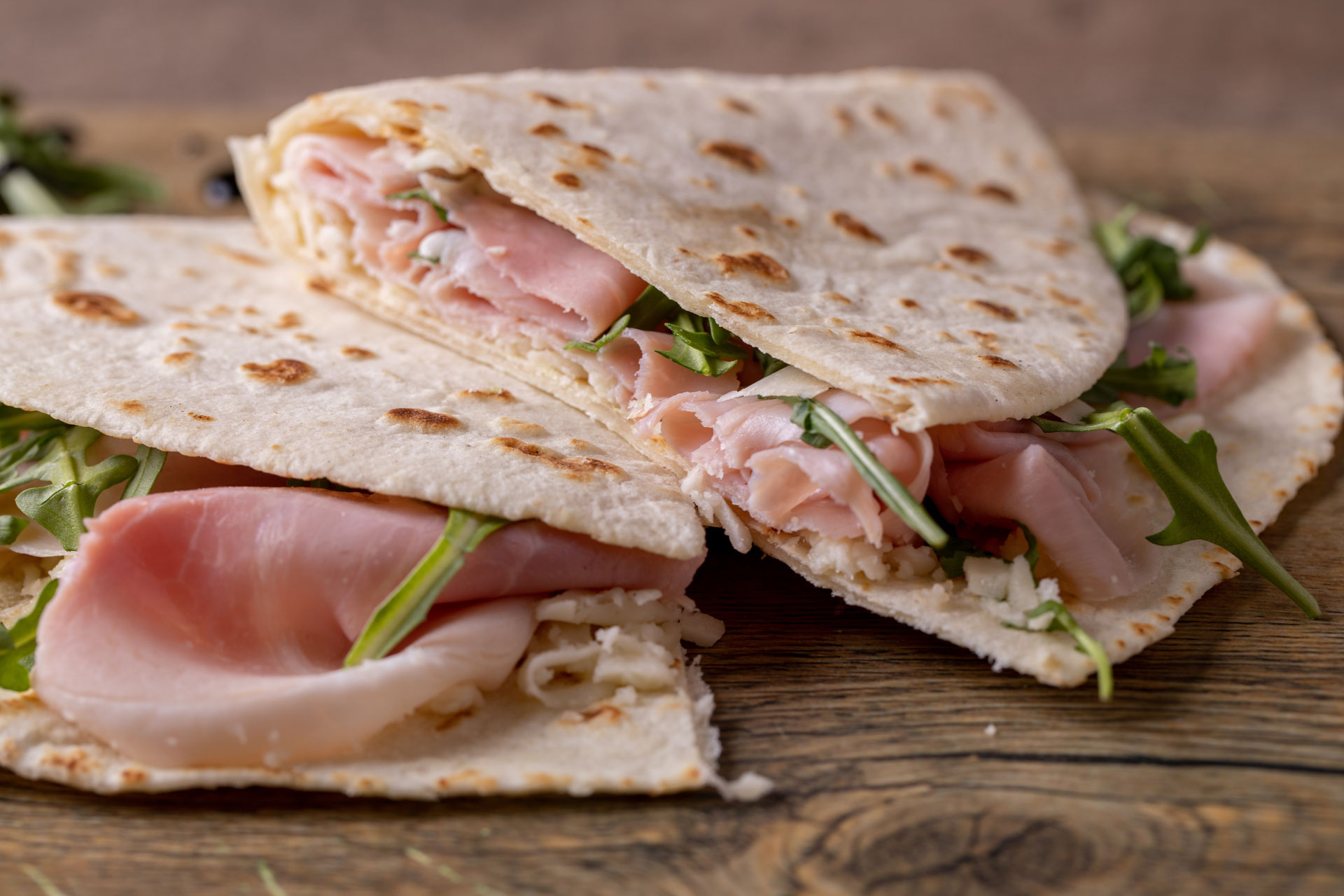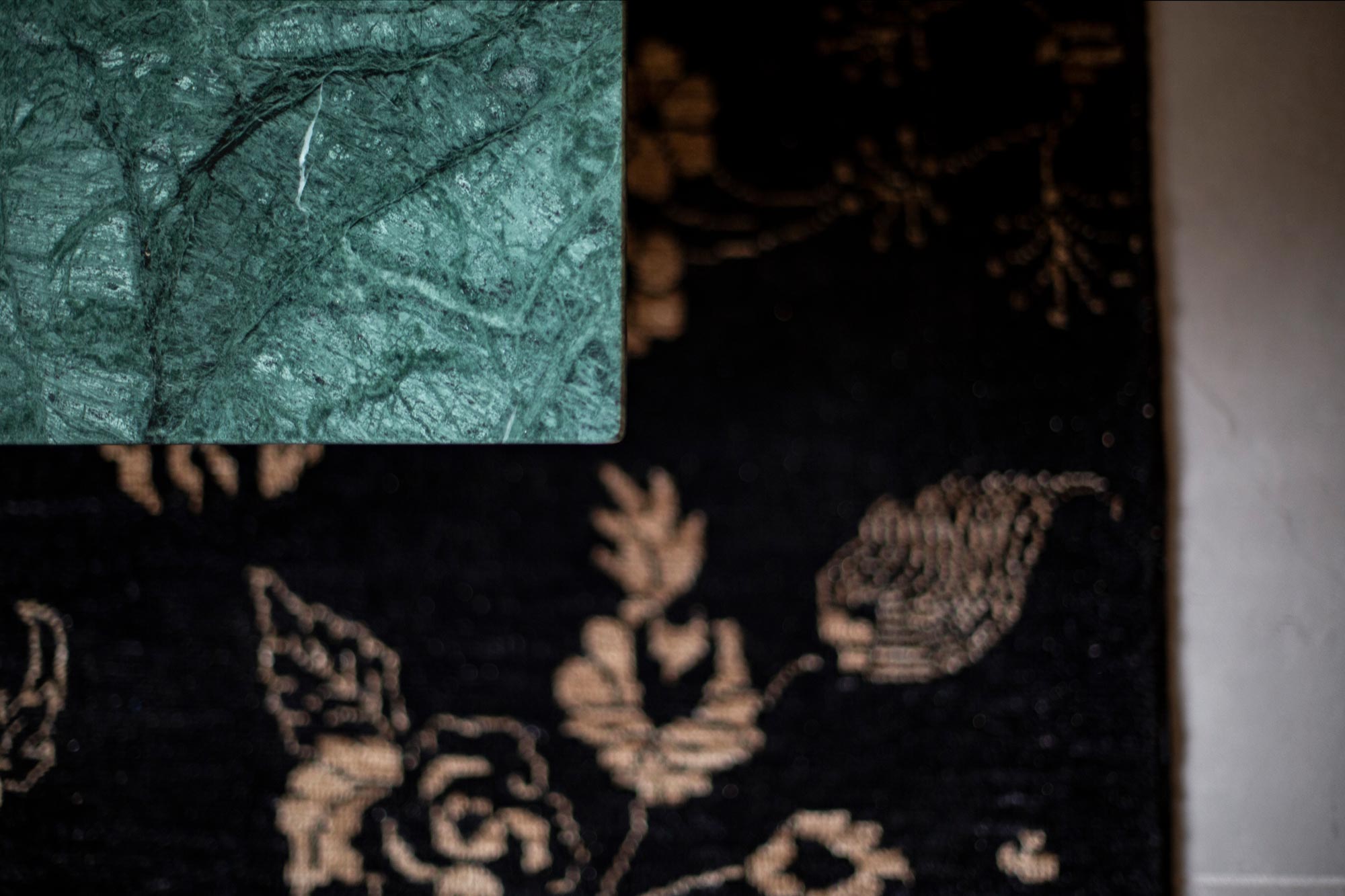The Romagna Piadina: a symbol of Italian cuisine
Among the many culinary specialties that Italy offers, Piadina Romagnola occupies a special place. This simple and delicious flat bread, symbol of Romagna, is an icon of the Italian gastronomic tradition. From its ancient recipe to the many modern variations, piadina is a celebration of simplicity and versatility in cooking. Let’s discover together its history, how to prepare it and how to enjoy it at best.
Origins of the piadina romagnola: an ancient history
The origins of the Romagna piadina go back to ancient times, probably at the time of the Etruscans, who prepared simple focacce with cereals and water. The name “piadina” appears officially for the first time in the fourteenth century, in the texts of the poet Giovanni Pascoli, who called it “bread, or rather national food of the Romagnoli”.
Born as a poor food, the piadina was prepared with a few simple ingredients – flour, lard, water and salt – and was cooked on terracotta or stone plates, called “trays”. Over time, this flat bread has become an essential element of the Romagna cuisine, a symbol of conviviality and peasant tradition.
The traditional recipe of the Romagna Piadina
Preparing an authentic Romagna Piadina requires few ingredients, but attention to detail is crucial to achieve the perfect taste and texture. Here is the basic recipe:
Ingredients:
• 500 g of flour 00
• 100 g of lard (can be replaced with olive oil for a lighter version)
• 1 tsp of salt
• 150 ml of water (or milk, for a softer piadina)
• 1 teaspoon of baking soda
Preparation:
1. In a bowl, mix the flour with salt and baking soda.
2. Add the lard and knead with your hands until you get a sandy mixture.
3. Pour the water little by little, mixing until you get a soft and elastic bun.
4. Cover the dough with a cloth and let it rest for about 30 minutes.
5. Divide the dough into balls and roll them with a rolling pin until you get discs about 3 mm thick.
6. Cook the piadine on a hot baking sheet or plate, turning them a couple of times until golden brown.

Variations of the Piadina Romagnola
The piadina tradition is expressed in different local variations, each with its own peculiarities:
• Rimini Piadina: thinner and larger, perfect to be rolled.
• Piadina Cesenate: medium thickness, soft but consistent.
• Piadina dell’alta Romagna: thicker and softer, similar to a focaccia.
In addition to the traditional versions, today we find variants prepared with alternative flours (wholemeal, farro, kamut) or with the use of extra virgin olive oil instead of lard, to meet more modern dietary needs.
How to taste the piadina: combinations and fillings
The Romagna piadina is incredibly versatile and lends itself to infinite combinations of flavors, both sweet and salty. Here are some traditional and gourmet combinations:
Traditional fillings:
• Squacquerone and rucola: the most typical and beloved combination in Romagna.
2. Ham and cheese: a timeless classic.
3. Sausage and onion: for the most rustic and greedy palates.
Gourmet versions:
• Vegetarian piadina: with grilled vegetables, hummus and avocado.
• Piadina with fish: smoked salmon, rucola and a spread of fresh cheese.
• Sweet: filled with chocolate cream, jam or honey.
Each piadina can be customized according to taste and season, making it perfect for any occasion, from quick lunch to evening snack.
Piadina and gastronomic tourism in Romagna
If you want to discover the true essence of piadina romagnola, the best way is to visit the Romagna and taste it directly in the typical kiosks scattered throughout the cities and villages. From Rimini to Cesena, passing through Ravenna and Forlì, the kiosks offer freshly prepared piadine with fresh and local ingredients.
Many restaurants and agritourisms in the area also organize cooking workshops, where you can learn how to prepare piadina according to tradition, using a rolling pin and baking it on terracotta pans.
Conclusion: a symbol of simplicity and Italian taste
The Romagna Piadina is much more than a simple bread: it is a symbol of tradition, conviviality and love for simple but genuine cuisine. Each bite tells the story of a land rich in culture and gastronomic passion, where even the simplest ingredients become masterpieces of taste.
Whether you choose to taste it in a Romagna kiosk, prepare it at home or reinvent it with creative combinations, the piadina remains an authentic and unforgettable culinary experience, celebrating the best of Italian cuisine.


